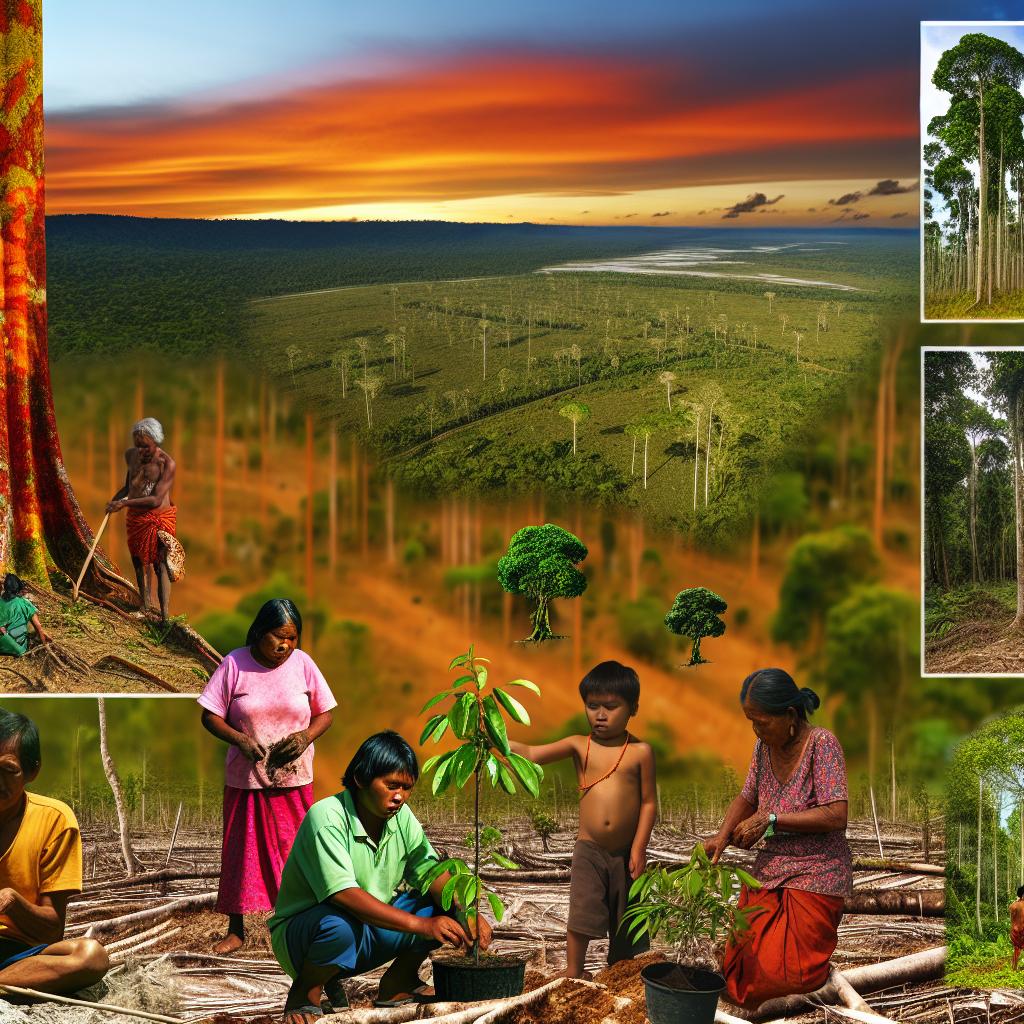
Rewildering and the Role of Indigenous Knowledge
Introduction to Rewildering and Indigenous Knowledge
Rewildering has emerged as a significant environmental movement aimed at restoring ecosystems to their natural states. It focuses on allowing natural processes to shape landscapes, often by reintroducing native species and removing invasive ones. Integral to successful rewildering projects is the incorporation of Indigenous knowledge due to its deep roots in understanding local ecosystems over centuries. This emerging movement represents a vital shift in conservation practices aimed at reversing human impacts on the environment.
Understanding Rewildering
Rewildering, sometimes referred to as rewilding, is a comprehensive ecological approach that is crucial for maintaining ecological balance and biodiversity. It seeks not only to return lands to wild, uncultivated states but also to transform the paradigms within which conservation operates. The philosophy of rewildering embraces the restoration of natural habitats, the reintroduction of keystone species, and the celebration of natural disturbances as ecological normatives.
The reintroduction of keystone species and the allowance of natural disturbances play major roles in this method. Initiating a rewildering project requires a shift in management strategies from human-centric to ecosystem-centric, ensuring landscapes can evolve based on intrinsic ecological dynamics. By allowing the natural environment to maintain its processes and relationships without intensive human control, rewildering opens the possibility for not just increased biodiversity but also enhanced ecosystem services crucial for human survival, including carbon sequestration and water regulation.
The Role of Keystone Species
Central to the success of rewildering initiatives are keystone species, organisms that exert significant influence on their environments, often shaping entire ecosystems. The importance of these species lies in their ecological roles, which maintain the structure and stability of their environments. A frequently cited example is the reintroduction of wolves to Yellowstone National Park. Their presence initiated a trophic cascade, where changes in prey populations and vegetation followed, leading to the restoration of balance in the ecosystem. The effects of these keystone species ripple outwards, affecting populations, vegetation growth, and even physical landscape features like river banks.
Keystone species interventions highlight the interconnectedness of all biosystems and reinforce the fundamental ecological lesson that all species, no matter their perceived size or impact, contribute to the overall health of an ecosystem. This understanding forms a critical component of rewildering projects, with biodiversity seen as not just a statistic but an essential component of ecological balance.
Importance of Indigenous Knowledge
Indigenous communities possess ecological insight formed through millennia of symbiotic interaction with their environments. These knowledge systems, encompassing historical data, techniques, and cultural reverence for nature, offer a valuable framework for understanding sustainable land management practices. Indigenous methodologies account for specific environmental conditions, allowing for tailored conservation strategies that biodiversity and preservation of resources.
Complementing Modern Science
Incorporating Indigenous knowledge alongside contemporary scientific methods creates a more holistic approach to environmental management. For example, Indigenous fire management techniques understand and harness seasonal cycles and plant characteristics to reduce wildfire risks and promote biodiversity. This differs from some modern fire suppression tactics by working with natural ecological processes rather than against them.
Both knowledge systems—traditional and scientific—offer unique perspectives that, when combined, produce richer, more adaptable conservation strategies. As each offers distinct insights, their integration represents a potent portfolio for addressing modern ecological challenges. By respecting and incorporating local Indigenous practices, rewildering can harvest a more nuanced understanding of ecological health, vital for effective conservation methodology.
Case Studies
Several successful case studies illustrate how the integration of Indigenous knowledge into rewildering projects has gained traction globally. The Pacific Island nations have adeptly blended traditional land management techniques with modern conservation strategies to mitigate climate change impacts effectively. Moreover, in Australia, Aboriginal Fire Management practices have redefined conservation strategies, emphasizing the importance of controlled burning in maintaining ecosystem health and preventing catastrophic wildfires.
These examples highlight the practical benefits of recognizing and respecting Indigenous expertise as we navigate the complexities of modern environmental conservation. The integration of these practices into formal conservation strategies can lead to more effective stewardship of global ecological resources.
Challenges and Considerations
Despite the evident benefits, incorporating Indigenous practices into rewildering involves navigating certain challenges. Ensuring genuine collaboration between conservation initiatives and Indigenous communities is paramount. Recognizing Indigenous authority, respecting land rights, and ensuring cultural sensitivity are non-negotiable. Conservation efforts must be transparent, forging partnerships that honor the autonomy and voice of Indigenous stakeholders.
The question of authenticity and agency also plays a role, with emphasis on equal partnerships in decision-making processes. Highlighting the historical context and contemporary realities Indigenous communities face remains essential to ensure rewildering initiatives can be mutually beneficial.
Moving Forward
Moving forward, the future success of rewildering lies in creating collaborative frameworks that leverage both scientific methodology and longstanding Indigenous knowledge. Building partnerships founded on mutual respect and shared objectives is crucial. Creating networks of exchange where traditional ecological knowledge is as valued as scientific expertise helps in fostering an inclusive approach to conservation and sustainability.
By blending these approaches, we can cultivate more comprehensive conservation strategies. This integration holds the promise of shifting not only ecological outcomes but cultural perspectives, paving a way toward sustainable, respectful, and culturally aware environmental management practices.
Conclusion
The integration of Indigenous knowledge in rewildering paradigms represents an opportunity to reconcile ancient wisdom with contemporary ecological science. As efforts to repair ecosystems continue, the acknowledgment and incorporation of Indigenous insights offer a path toward more balanced, biodiverse, and harmonious futures. Indispensable, Indigenous knowledge enriches our understanding of ecological processes, providing profound lessons in sustainability and resilience. This partnership marks a transformative step towards realizing genuinely sustainable environmental stewardship.